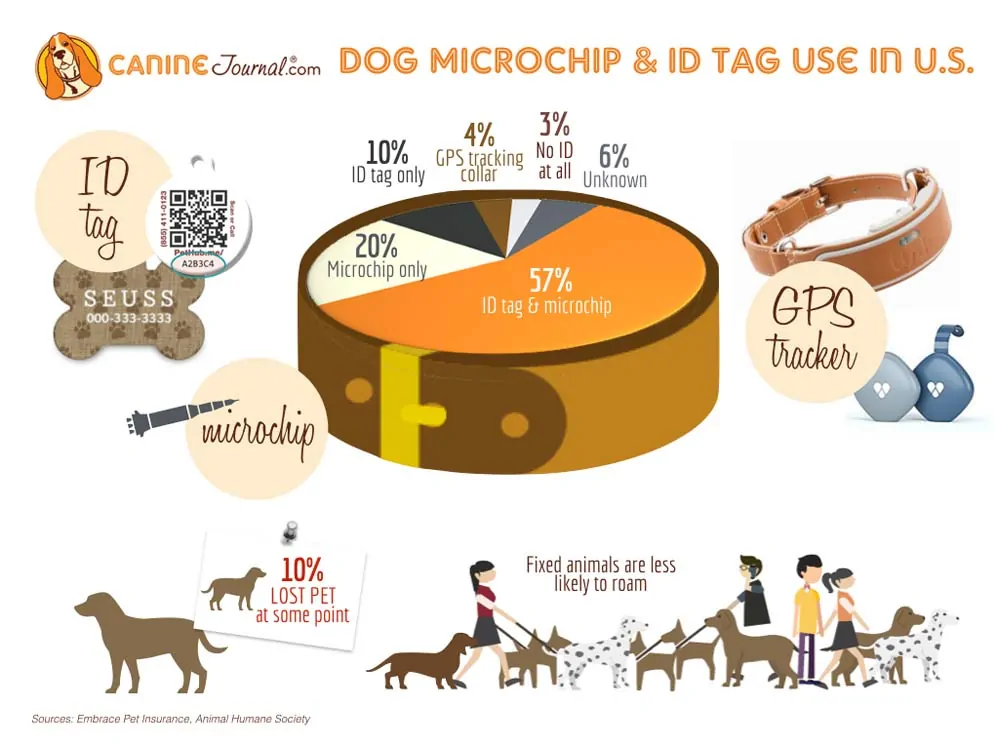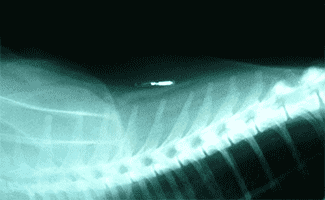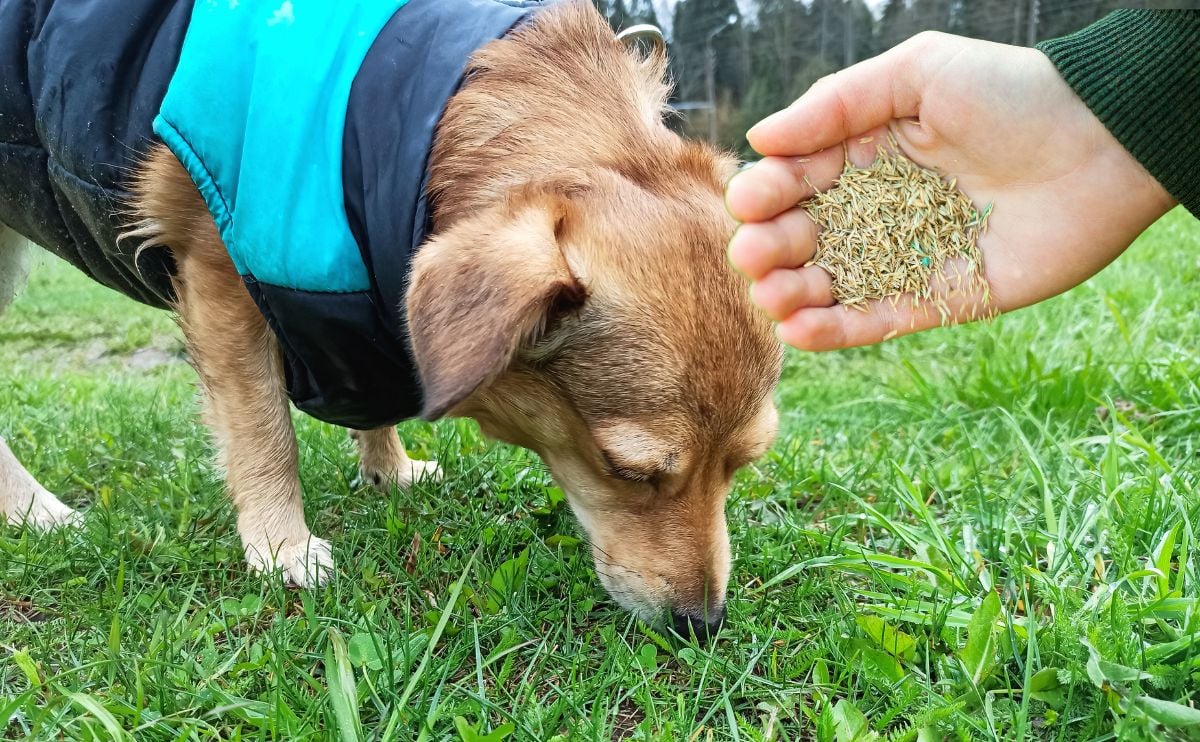When you purchase through links on our site, we may earn a commission. Here’s how it works.

More than 10 million dogs and cats are lost or stolen in the U.S. every year — and sadly, only one in 10 make it back to their owner1. In honor of National Lost Pet Prevention Month in July, we’ve got all the need-to-know information to help prevent the loss of your pet and steps to take when your pet goes missing. Be sure to take the necessary precautions before your dog breaches your yard this summer or 4th of July fireworks spook him away from home.
- Microchip And Dog Tag Use: A National Survey Of Pet Parents
- Dog Microchip And Tag Infographic
- Why Microchip Your Pet?
- How Do Dog Microchips Work?
- Where Can I Get My Dog Microchipped?
- How To Register My Dog's Microchip
- How To Find A Lost Dog With A Microchip
- Watch A Dog Get Microchipped (Video)
- 4 Ways To Prevent A Lost Dog
Microchip And Dog Tag Use: A National Survey Of Pet Parents

While experts strongly recommend using both microchips and dog tags to prevent a lost pet, what do pet owners do?
A 2018 survey by Embrace Pet Insurance polled 3,000 U.S. pet parents about how they ID their pets. The report indicates that:
- More than 57% of pet parents ID their pets with both a dog tag and microchip
- 20% ID their pets with just a microchip
- 10% ID their pets with just a name dog tag
- 4% use a GPS tracking collar
- 3% don’t ID their pets at all
Overall, 10% of all pet parents surveyed had their pet lost or stolen at some point in their pet’s life.2
Dog Microchip And Tag Infographic

Why Microchip Your Pet?

Microchipping a pet can make the difference between finding or losing your dog forever. If animal control finds your lost dog or he turns up at a rescue shelter or a local veterinarian, they can easily scan your dog’s tracking chip to get contact details to reunite you with him.
While personalized dog tags imprinted with your contact information are also a great lost-pet prevention tool, they can be removed or become detached. However, since a microchip is under your dog’s skin, you never have to worry about your dog going unidentified. With that said, it’s always a good idea to have a tag on your dog’s collar as well in case a neighbor or another individual who doesn’t have a microchip scanner on hand finds your lost dog.
How To Lookup Your Dog’s Microchip
Note: If you find a lost dog who has no noticeable ID, many rescue organizations have microchip scanners and invite locals to bring stray dogs into local shelters to be scanned and hopefully returned home.
How Do Dog Microchips Work?

Microchips help identify the pet parent’s contact information in case someone finds a lost pet. The chips are tiny capsules about the size of a grain of rice embedded under the skin. The pain is equivalent to getting a vaccine. Some microchips have anti-migration features, which help the capsules stay in place by bonding to the tissue just under the dog’s skin.
Where Are Dogs Microchipped?
Typically the microchip is inserted via an application gun or syringe in the tissue of the mid-spine between a dog’s shoulder blades.
What Are The Side Effects Of Microchipping My Dog?
There might be slight irritation on the skin where the microchip is placed, as with any vaccination or injection. However, instances of this are very rare and should not be a cause for concern.
Can You Track Your Dog With A Microchip?
Don’t confuse this with a GPS because microchips don’t track you or your pet’s location. Microchips use radio-frequent identification (RFID) technology that does not require a power source like GPS trackers.
What Age Can You Microchip A Puppy?
You can microchip a puppy as early as six to eight weeks old.
Should I Microchip My Cat?
If you have an outdoor cat, the obvious answer is yes. But, even if you have an indoor cat, you should consider microchipping them. They could sneak out the door or see a bird and run off. It’s best for your kitty to wear a collar with an ID tag at all times and that you microchip them also. Better safe than sorry with your sneaky cat, and taking these extra steps could be the difference between finding your escape artist or losing them forever.
Where Can I Get My Dog Microchipped?

In many cases, rescue shelters and breeders automatically microchip dogs for adoption. But this isn’t always the case. If you have a new dog without a microchip or you’ve decided to microchip your long-time pet, you have several options:
- Your veterinarian
- Animal shelters and rescues
- Many PetSmart locations
How Much Does It Cost To Microchip My Dog?
It sounds like an expensive procedure, but it’s pretty affordable. Microchips for dogs cost $25-$70 on average, depending on the service provider and your dog’s breed. Some animal shelters, like the ASPCA, also hold periodic clinics where you can save on microchipping. And some pet insurance plans may cover all or part of the cost of microchipping your pet.
If you adopt a dog from a rescue organization, it’s common for them to include the cost of microchipping your dog and spaying/neutering in your adoption fee.
How To Register My Dog’s Microchip

You have to register your dog’s microchip to sync your contact information with the chip. Otherwise, you can’t be connected with your dog when they scan his chip. And if your new dog already has a microchip, you’ll need to change the contact details on it.
You should always register or transfer ownership information with your dog’s microchip manufacturer. If you don’t know which company it is, ask the shelter or former owner if they have that information. You can also try to look up the company using the microchip’s ID number at AAHA Pet Microchip Lookup. Also, make sure you understand dog ownership laws.
Pet Microchip Companies
Here are some of the most common microchip registration sites. Registration and transfer requirements (and fees) vary by company.
Microchip Renewal And Keeping Your Information Up To Date
When your chip comes back up for renewal with the registration company, you will receive a letter or email asking you to renew an annual or lifetime policy with them. While this does provide some premium services like found pet travel assistance and a free medical hotline, it is not necessary to pay this fee to keep your dog registered. The only thing you will need to do to keep your dog in the microchip system is to make sure your contact details are current, especially if you have moved recently.
How To Find A Lost Dog With A Microchip

Here are some great tips from The Humane Society and other animal welfare organizations. Visit our lost dog article for even more information.
- Contact your local animal protection/control
- File a lost pet report with every shelter within a 60-mile radius of your home and, if possible, visit the nearest shelters daily
- Contact local veterinarians
- Walk and/or drive through your neighborhood several times each day. Ask neighbors, home repair workers, letter carriers, and delivery people if they’ve seen your pet
- Hand out flyers with a recent photograph of your pet and your contact information. Post flyers at grocery stores, community centers, veterinary offices, traffic intersections, pet supply stores, and other locations*
- Place advertisements in newspapers and with radio stations*
- Notify your local police if you think your dog was stolen
*If you have pet insurance, check your policy. Fetch and Trupanion now cover the cost of advertising lost dogs.
Watch A Dog Get Microchipped (Video)
Microchipping is a painless, quick procedure. Watch as this puppy gets her microchip. The vet walks through the process and shows how easy and comfortable the dog is during the process.
4 Ways To Prevent A Lost Dog

In addition to making sure your dog has an ID tag and microchip, there are several other tips to keep in mind to help prevent him from going astray.
- Spay or neuter your dog. Research shows that fixed animals are less likely to roam3.
- Always leash or tether your dog when you’re outside.
- Check the fencing in your yard regularly to make sure it’s sturdy (and to ensure that your dog isn’t digging a hole to tunnel out).
- Never leave your dog leashed outside a store or alone in the car (even if it’s locked).
While many dogs are natural wanderers or escape artists, a lot of dogs go missing because they get spooked by loud noises. Shelters see a spike in admissions of runaway pets as a result of the July 4th fireworks. See some tips on how to keep your dog calm with fireworks.
Sources: [1] American Humane, [2] Embrace Pet Insurance, [3] Animal Humane Society
Tagged With:

